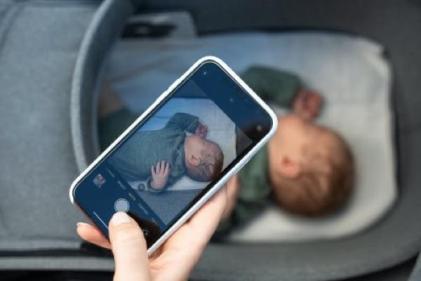There are basically four choices when it comes to taking a child’s temperature; under the tongue, in the armpit, in the ear with a special thermometer, or rectally.
What kind of thermometer you use depends on the method you choose.
Digital thermometers can be used orally, rectally, or under the arm, unless you purchase a special rectal thermometer that has a guard on it. Digital thermometers are the most accurate and give a reading much faster than the old fashioned glass thermometer. Additionally, the glass and mercury in these thermometers can be dangerous around children.
Thermometers that are meant to be used in the ear are called tympanic thermometers. These are the thermometers that are seen in emergency rooms and some paediatrician’s offices. They are a bit pricey and can only be used in the ear.
Where to put the thermometer is another question. The mouth, ear, rectum, and armpit all have advantages and disadvantages. For very small infants (under 3 months of age), a rectal temperature reading is the most accurate. After 3 months of age, doctors recommend that you use a different method as it can be easy to tear the rectal wall in a squirming toddler.
Taking a temperature in the armpit is called an auxiliary temperature. The reading you get can be up to 2 full degrees lower than the internal temperature but in some instances, this could be easier for your child.
A 4 year old child is usually ready to start having their temperature taken by mouth. He must be able to hold the thermometer under the tongue for the time required. If he cannot do so, you may have to use another method until he is a bit older.
What kind of thermometer you use depends on the method you choose.
Digital thermometers can be used orally, rectally, or under the arm, unless you purchase a special rectal thermometer that has a guard on it. Digital thermometers are the most accurate and give a reading much faster than the old fashioned glass thermometer. Additionally, the glass and mercury in these thermometers can be dangerous around children.
Thermometers that are meant to be used in the ear are called tympanic thermometers. These are the thermometers that are seen in emergency rooms and some paediatrician’s offices. They are a bit pricey and can only be used in the ear.
Where to put the thermometer is another question. The mouth, ear, rectum, and armpit all have advantages and disadvantages. For very small infants (under 3 months of age), a rectal temperature reading is the most accurate. After 3 months of age, doctors recommend that you use a different method as it can be easy to tear the rectal wall in a squirming toddler.
Taking a temperature in the armpit is called an auxiliary temperature. The reading you get can be up to 2 full degrees lower than the internal temperature but in some instances, this could be easier for your child.
A 4 year old child is usually ready to start having their temperature taken by mouth. He must be able to hold the thermometer under the tongue for the time required. If he cannot do so, you may have to use another method until he is a bit older.



